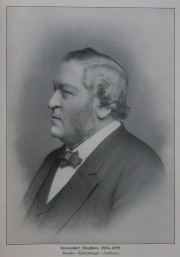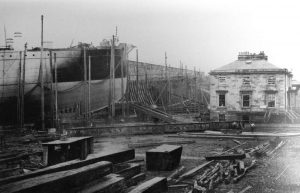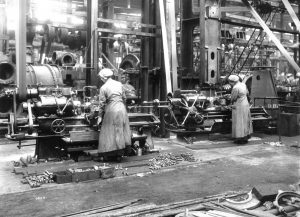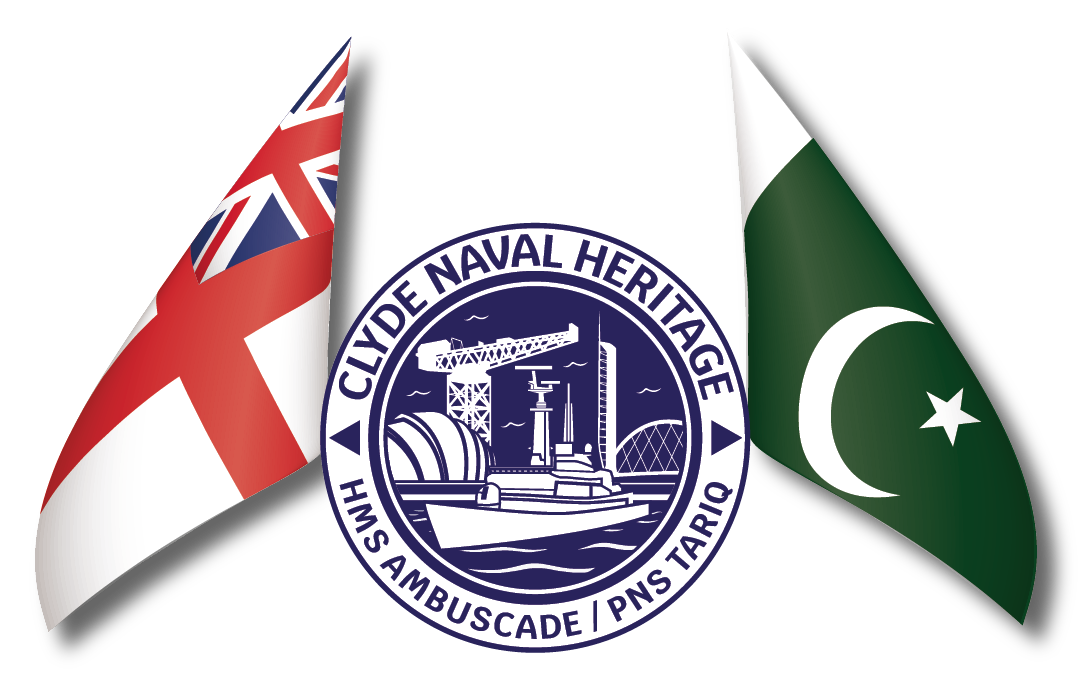Early Origins and Founding (1750s–1840s)
Alexander Stephen and Sons Ltd., a famous shipbuilding company, traces its origins back to the mid-18th century. Founded by Alexander Stephen in 1750, the business began in the small village of Burghead on the Moray Firth, Scotland. Stephen was a carpenter, and his family’s first involvement in shipbuilding came from constructing small fishing vessels and coastal craft. Over time, the company expanded its operations and moved to different locations, reflecting both the increasing demand for ships and the Stephen family’s ambition.
By the 1790s, the company relocated to Aberdeen, where it engaged in building larger vessels, eventually developing a strong reputation in the Scottish shipbuilding industry. Further moves included Glasgow in 1813, where the company took advantage of the River Clyde’s prominence in shipbuilding. This early success laid the foundation for the establishment of the Linthouse yard in Govan decades later.

The Move to Linthouse and Expansion (1850s–1870s)
The firm’s defining moment came in 1850 when Alexander Stephen’s grandson, also named Alexander, took over the family business. This marked the beginning of a new era, with the company’s operations moving to the Linthouse district of Govan, Glasgow. By 1851, the Stephens acquired a substantial plot of land on the south bank of the River Clyde, where they built the Linthouse shipyard. This strategic location positioned Alexander Stephen and Sons in the heart of Scotland’s burgeoning industrial centre, as the Clyde was becoming a global hub for shipbuilding during the Industrial Revolution.
At Linthouse, the company primarily focused on building wooden sailing vessels but soon transitioned to iron-hulled ships as advancements in engineering and metallurgy revolutionized the industry. In the 1860s, the company moved into constructing steamships, beginning with paddle steamers and later screw-propelled ships. This adaptability helped the firm become a key player in the Clyde shipbuilding scene, competing with other major yards like John Brown and Fairfield.

Peak Years and Notable Vessels (1880s–1910s)
The late 19th century was a period of growth and innovation for Alexander Stephen and Sons. The company played a major role in constructing ships for both commercial and naval purposes. Their expertise in shipbuilding technology allowed them to produce high-quality vessels, cementing their reputation as one of the premier yards on the Clyde.
The yard constructed a wide variety of vessels, including ocean liners, cargo ships, and warships. Notable ships built during this period include the SS Dunluce Castle (1897), a passenger liner for the Union-Castle Line, and the SS Scotian (1898), an ocean liner for the Allan Line. The company also built several ships for the Royal Navy, including cruisers and destroyers. The HMS Dryad (1909), a sloop, was among the vessels constructed at Linthouse during this era.
The turn of the century brought about increasing competition in the shipbuilding industry, but Alexander Stephen and Sons remained competitive by continually modernizing their facilities and adopting new technologies such as hydraulic riveting and steel plating. The company’s workforce grew significantly, with thousands of skilled labourers employed at Linthouse.
World War I and Its Impact (1914–1918)
The First World War marked a critical period for Alexander Stephen and Sons, as the demand for naval vessels skyrocketed. The Linthouse yard was heavily involved in the war effort, producing a large number of warships for the British Royal Navy. The company focused on building destroyers, sloops, and minesweepers during this time. Notable warships built at Linthouse included the HMS Medea (1915) and the HMS Mentor (1914), both destroyers that saw active service during the war.
The war led to a massive increase in production at the Linthouse yard, with the workforce expanding to meet the high demand for ships. However, the post-war period brought about challenges, as the demand for warships decreased, and there was a global surplus of shipping capacity.
The Interwar Period and Specialization (1920s–1930s)
After World War I, the global shipbuilding industry faced a downturn, and Alexander Stephen and Sons struggled to adapt to the reduced demand for ships. Despite these challenges, the company continued to build both naval and commercial vessels. The firm specialized in building destroyers for the Royal Navy, maintaining its relationship with the Admiralty. However, the company also took on the construction of tankers and passenger ships to diversify its portfolio.
During the 1920s and 1930s, the shipbuilding industry in the UK experienced periods of boom and bust. Alexander Stephen and Sons weathered these challenges by maintaining a focus on high-quality craftsmanship and forging strong relationships with shipowners and the British government.

World War II and Another Surge in Shipbuilding (1939–1945)
With the outbreak of World War II, Alexander Stephen and Sons once again became a key contributor to the British war effort. The Linthouse yard was used to construct a range of military vessels, including destroyers, frigates, and escort carriers. The firm produced ships such as the HMS Zealous (1944) and the HMS Venus (1943), both destroyers that played significant roles during the war.
The war revitalized the shipbuilding industry, and the Linthouse yard reached peak production levels during the early 1940s. However, this boom was followed by a post-war decline, as the industry again faced a downturn.

Post-War Decline and Nationalization (1950s–1970s)
After World War II, the global shipbuilding industry entered a period of decline, and British yards, including Alexander Stephen and Sons, faced increasing competition from foreign shipbuilders, particularly in Japan and later South Korea. Despite efforts to modernize its facilities and diversify into building more advanced ships, including oil tankers and bulk carriers, the company struggled with reduced demand and increased costs.
By the 1950s and 1960s, the British shipbuilding industry was in crisis, with many companies facing financial difficulties. In 1968, Alexander Stephen and Sons was merged with Upper Clyde Shipbuilders (UCS), a consortium of major Clyde shipyards that aimed to prevent the collapse of the industry in Glasgow. However, the UCS experiment was short-lived, and by 1971 the consortium collapsed due to financial instability.
Alexander Stephen and Sons was nationalized as part of British Shipbuilders in 1977, as the UK government sought to save the shipbuilding industry from complete collapse. Despite this intervention, the company continued to struggle with financial difficulties and a lack of orders.
Closure and Legacy (1980s–Present)
The Linthouse yard, once a symbol of Scottish industrial prowess, was closed in 1982. The closure marked the end of more than two centuries of shipbuilding history for Alexander Stephen and Sons. The demise of the company reflected the broader decline of the British shipbuilding industry, which had once been the largest and most advanced in the world but had been overtaken by foreign competition.
Today, the site of the Linthouse yard has been redeveloped, and very little remains of the shipyard itself. However, the legacy of Alexander Stephen and Sons lives on through the ships it built, many of which served in critical naval campaigns and commercial ventures. The company’s contributions to maritime engineering and Scottish industrial history remain significant.

